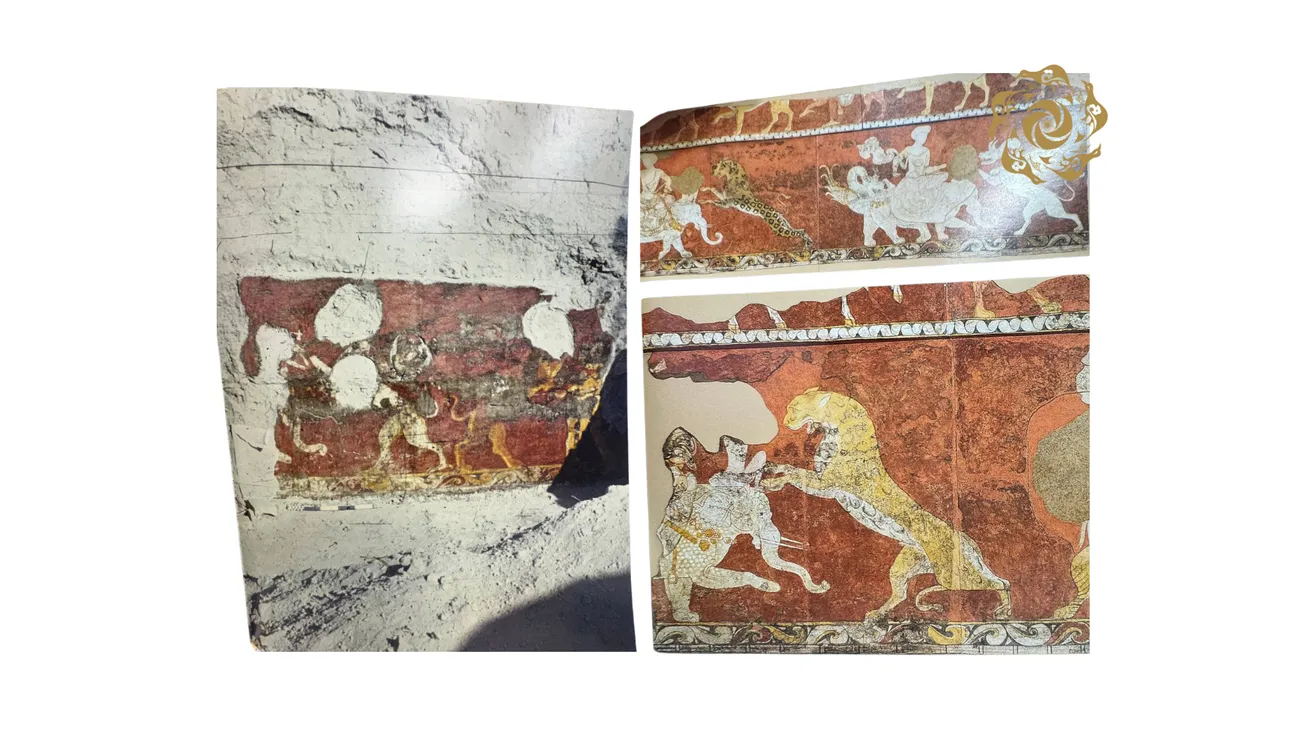Panjakent, an ancient city located in present-day Tajikistan, was one of the major cultural centers of Sogdiana during the 6th–8th centuries. Archaeological excavations, which began in 1946, revealed to researchers a unique phenomenon — the Panjakent wall paintings, recognized as one of the masterpieces of early medieval Central Asian art.

The scenes depicted on the walls of palaces, noble houses, and temples illustrate the rich and diverse life of the Sogdians. These murals portray episodes from folk epics, hunting scenes, celebrations, rituals of worship, and everyday life. They are distinguished by their bright color palette, dynamic composition, and high artistic expressiveness.
Scholarly research indicates that the themes of the Panjakent murals reflect the religious syncretism of the Sogdians, blending Zoroastrian, Buddhist, and local cult elements. For example, one fresco features scenes interpreted as episodes from a Sogdian version of the "Shahnameh" — the heroic epic of the struggle between good and evil.
Particular attention is drawn to depictions of female figures: ladies with elaborate hairstyles and luxurious garments testify to the high status of women in Sogdian society. The artists skillfully conveyed the finest details of costumes, jewelry, and everyday objects, allowing modern scholars to reconstruct many aspects of Sogdian daily life.
The Panjakent murals have become an invaluable source for studying the history, religion, art, and social structure of Sogdiana. Their artistic power and cultural significance make them a true treasure of world heritage.
WOSCU Press Service
